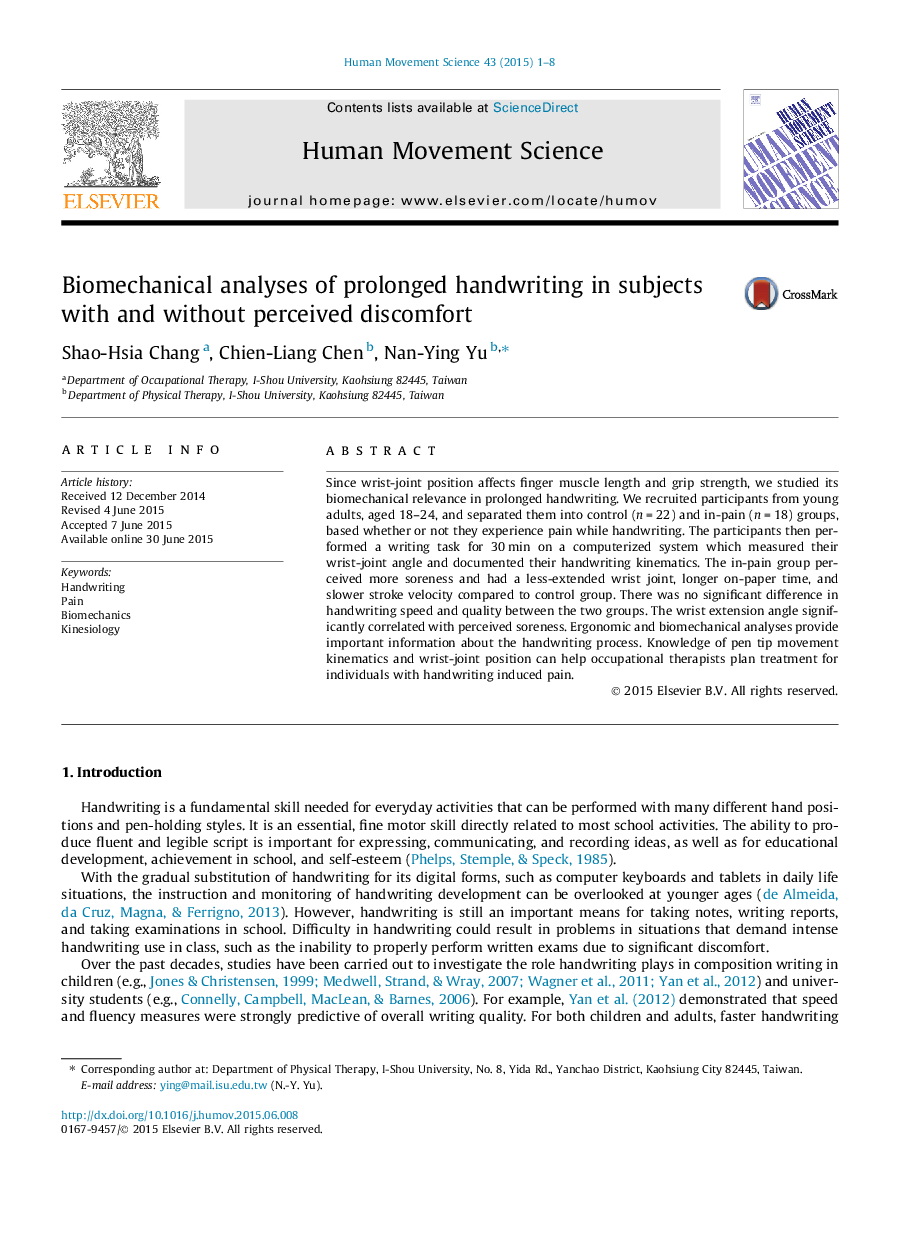| Article ID | Journal | Published Year | Pages | File Type |
|---|---|---|---|---|
| 928257 | Human Movement Science | 2015 | 8 Pages |
Since wrist-joint position affects finger muscle length and grip strength, we studied its biomechanical relevance in prolonged handwriting. We recruited participants from young adults, aged 18–24, and separated them into control (n = 22) and in-pain (n = 18) groups, based whether or not they experience pain while handwriting. The participants then performed a writing task for 30 min on a computerized system which measured their wrist-joint angle and documented their handwriting kinematics. The in-pain group perceived more soreness and had a less-extended wrist joint, longer on-paper time, and slower stroke velocity compared to control group. There was no significant difference in handwriting speed and quality between the two groups. The wrist extension angle significantly correlated with perceived soreness. Ergonomic and biomechanical analyses provide important information about the handwriting process. Knowledge of pen tip movement kinematics and wrist-joint position can help occupational therapists plan treatment for individuals with handwriting induced pain.
